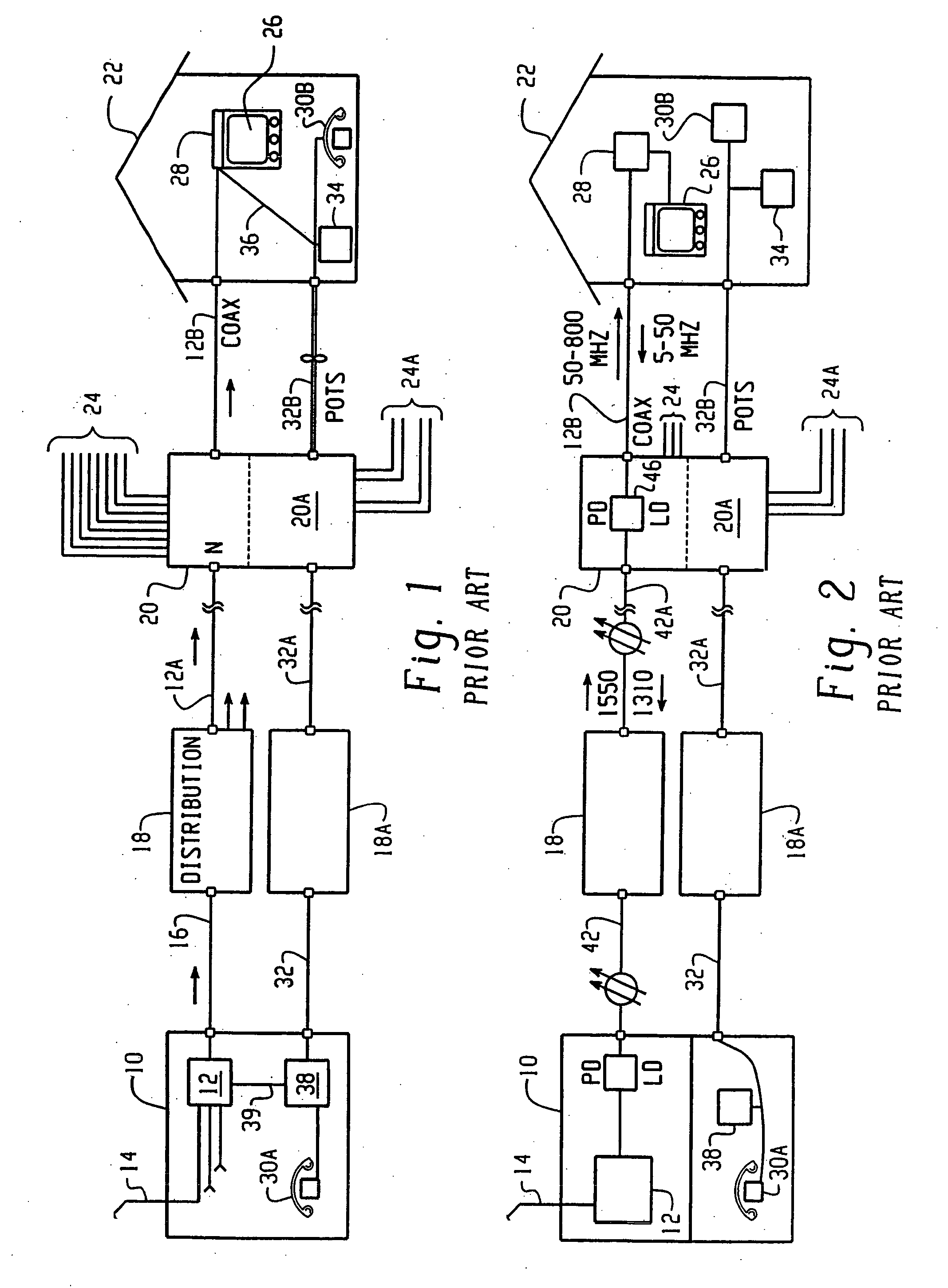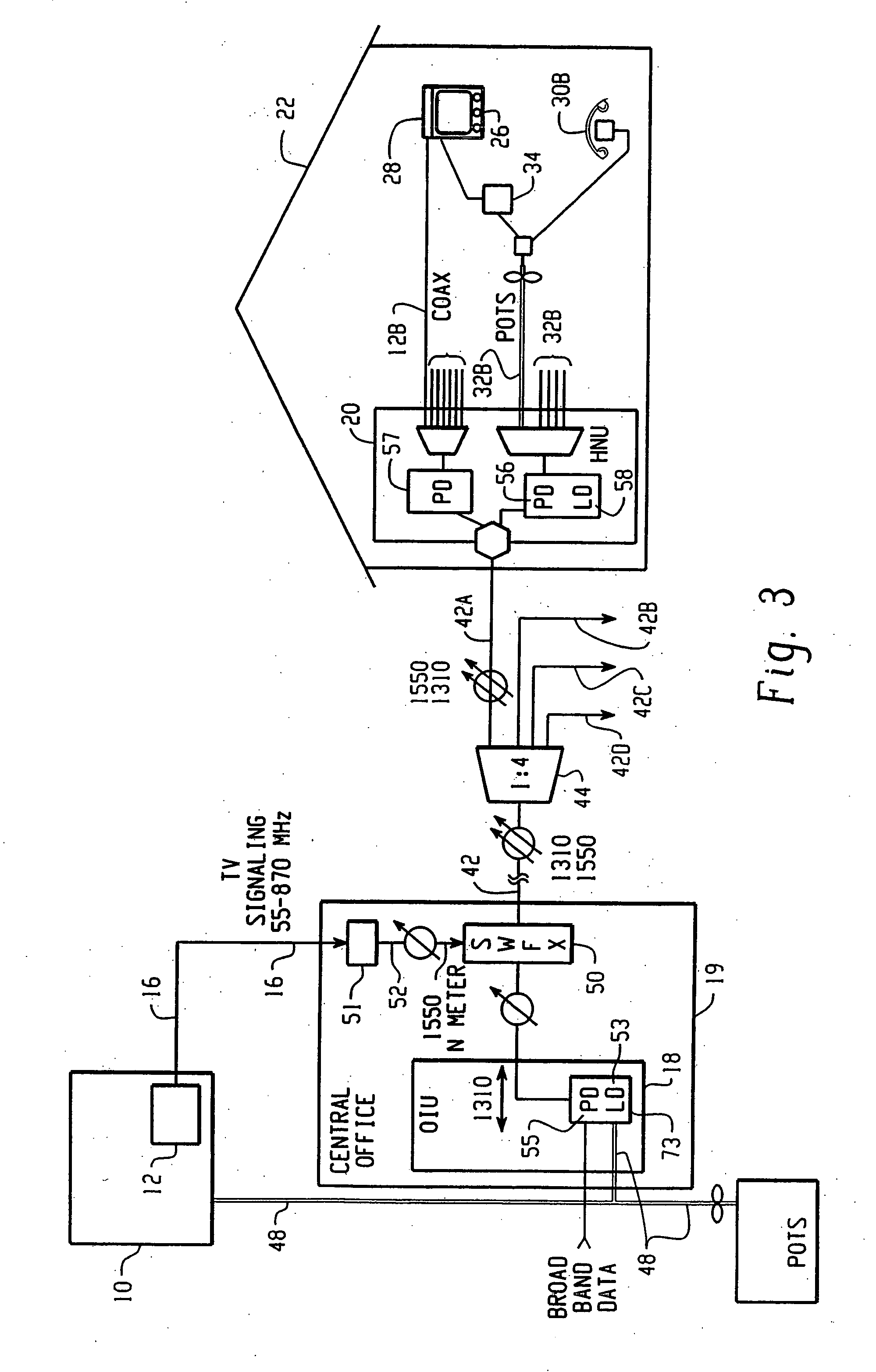Bidirectional optical communications having quick data recovery without first establishing timing and phase lock
a technology of bidirectional optical communication and data recovery, which is applied in the direction of digital transmission, frequency-modulated carrier system, duplex signal operation, etc., can solve the problems of extremely high bandwidth of optical fiber and ineffective use of optical fiber as a single bidirectional telephone channel
- Summary
- Abstract
- Description
- Claims
- Application Information
AI Technical Summary
Benefits of technology
Problems solved by technology
Method used
Image
Examples
Embodiment Construction
[0027] Referring now to FIG. 1, there is shown a typical transmission and distribution system for cable TV and normal telephone service, referred to as POTS (plain old telephone service). As shown, cable TV source location 10 has cable TV transmission equipment 12 which may originate from several sources including a satellite receiver 14. The TV equipment 12 would then amplify this signal and send it out typically on a coaxial line, such as line 16, to a distribution system which may include several terminals, such as terminal 18, where the signal is again amplified and further distributed to an even larger multiplicity of locations. It is possible, of course, that there is no further amplification or distribution, or alternately, such re-amplification and further distribution may occur several times. In any event, the signal will eventually arrive at a local distribution terminal 20 by means of a coaxial cable 12a from which it is then distributed to a home or building 22 by a coax...
PUM
 Login to View More
Login to View More Abstract
Description
Claims
Application Information
 Login to View More
Login to View More - R&D
- Intellectual Property
- Life Sciences
- Materials
- Tech Scout
- Unparalleled Data Quality
- Higher Quality Content
- 60% Fewer Hallucinations
Browse by: Latest US Patents, China's latest patents, Technical Efficacy Thesaurus, Application Domain, Technology Topic, Popular Technical Reports.
© 2025 PatSnap. All rights reserved.Legal|Privacy policy|Modern Slavery Act Transparency Statement|Sitemap|About US| Contact US: help@patsnap.com



